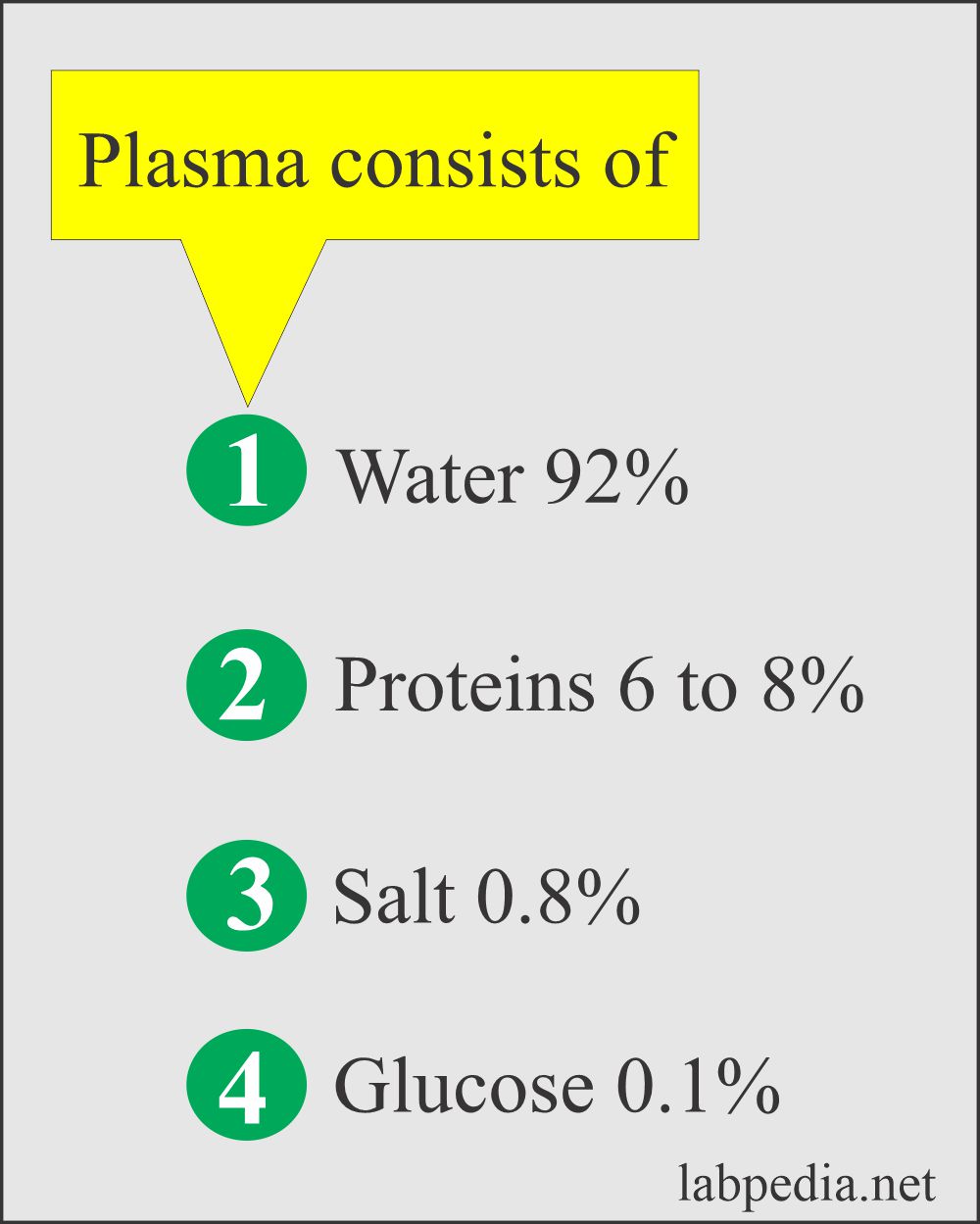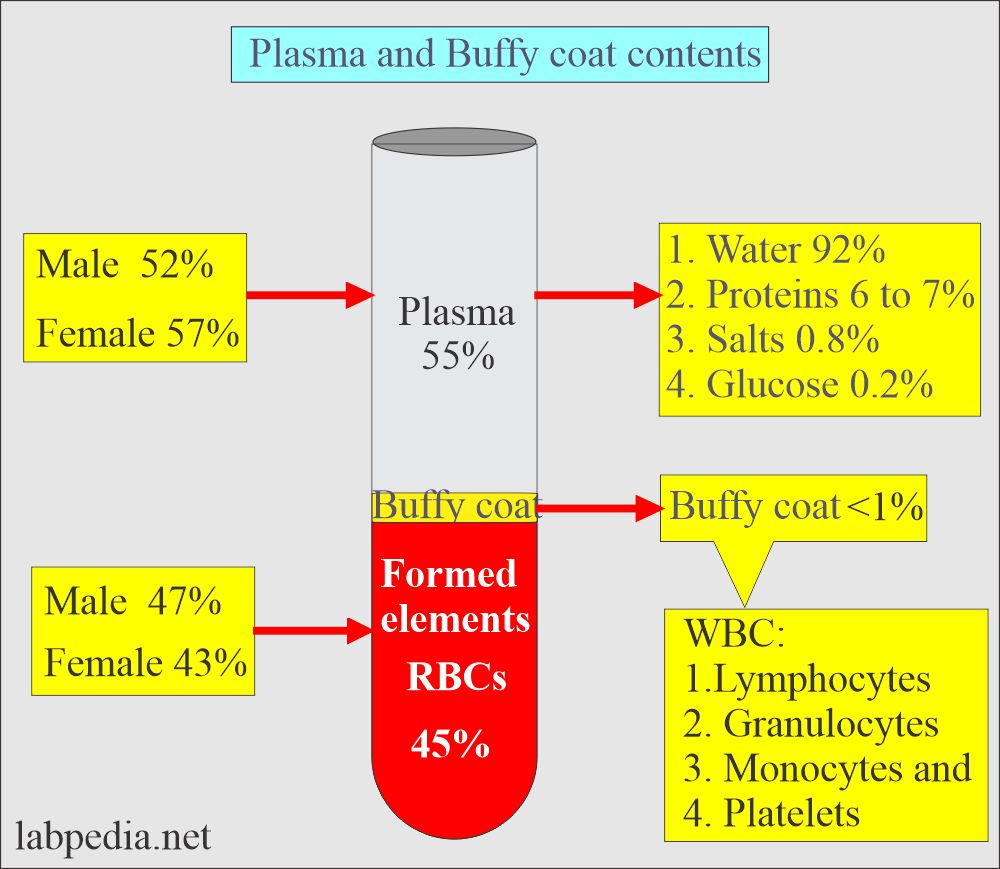Laboratory:- Part 1 – Serum, Plasma Preparation, Specimen Storage and Precautions
Serum, Plasma Preparation
- To prepare serum or Plasma, following precautions or steps is crucial to get accurate results.
How will you prepare serum and plasma?
- The sample, when collected, should be subjected to examination.
- Serum and plasma should be separated within 2 hours of the collection as soon as possible.
- Don’t try to separate serum prematurely from the blood.
- Give at least 20 to 30 minutes at 37 °C for the clot to form.
- Centrifuge the sample to get a clear serum.
- Premature centrifugation will give rise to microclot formation, which may create a problem for automation.
- The coagulation process is completed in 20 to 30 minutes in the glass and silicon tubes but is delayed in the plastic tube.
What samples are avoided, and what are the possible causes?
- Dark brown serum indicates intravascular hemolysis with the formation of methemalbumin.
- This may occur in severe sepsis, hemolytic crises of sickle cell anemia, and paroxysmal nocturnal hemoglobinuria.
- Dark green serum often indicates biliverdin and may be seen in severe obstructive jaundice.
- If the serum is clear and turbidity appears after some time, this indicates cryoglobulins; this is usually seen if the serum is kept in the fridge.
- If the serum is more viscous, then check for the paraproteins.
- In multiple myeloma cases, serum protein may reach 13 g/dL and produce noticeable serum changes.
- If serum shows fine fibrin threads after separation, it may be due to heparin therapy or other anticoagulant treatment.
- Rarely, you may see a brown tint in the serum, which may be due to myoglobin following muscle injury or myositis.
- The bright yellow serum may be due to drugs or vitamin supplements.
- Ladies on contraceptive pills may have a green tint in the serum due to ceruloplasmin.
- The jaundiced serum is yellow and should be handled with care.
- If the serum yield is small, that may indicate hemoconcentration or another possibility is polycythemia.
How will you get a good sample?
What are the precautions to get a good sample?
- Improve the venepuncture procedure.
- Use plastic beads or gel tubes to get a better serum.
- Plasma, if obtained with lithium heparin anticoagulants, is a clearer sample.
- Can use serum clarifying filters to get a good serum.
- For glucose, use preservatives that will preserve the glucose and enzymatic methods like lithium iodoacetate.
- Avoid the exposure of the sample to high temperatures.
- Avoid the use of trauma to the sample, e.g., vigorous handling.
- Don’t keep serum or plasma in contact with the cells for more than 30 minutes.
- Potassium level increases by 2 to 8 mmol/L without hemolysis and even in the refrigerator.
- If glucose plasma is left in contact with cells at room temperature, it will lose 10% glucose per hour.
- Glucose serum or plasma separated immediately will remain stable for 4 hours in the fridge.
- Serum or plasma for hormones needs even more precautions; the best is to freeze the sample.
How will you store the sample?
- If centrifuging the sample is delayed for any reason, keep it at room temperature. Don’t refrigerate, as this may lead to hemolysis.
- If there is a delay in the test, then keep serum or plasma at 4 °C.
- If the temperature of 4 °C is unsuitable for the special test, keep the serum at -20 °C.
- Centrifuge the sample with a stopper, which will decrease the evaporation.
- The stopper also avoids the evaporation of volatile analytes like ethanol.
- The stopper also maintained the anaerobic conditions needed for CO2 and ionized calcium.
- Plastic beads or silicone gel forms a barrier to separate the clot from the serum and allows easy transfer.
- The serum or plasma should not contact cells for more than 30 minutes.
What is the difference between serum and plasma?
- Most of the time, the serum is used to estimate various tests and enzymes.
- There are a few tests where plasma interferes with the enzyme estimations:
- Heparin interferes with acid phosphatase.
- EDTA interferes with alkaline phosphatase.
Difference between serum and plasma:
| Parameters | Plasma | Serum |
| Fibrinogen | 0.2 to 0.4 G/dL | Nil |
| Presence (Site) | Present in the body fluid | Prepared outside the body |
| Outside the body | Always contains anticoagulant | Never anticoagulant added |
| Physical characters | It consists of serum + clotting factors | It lakes clotting factors. |
| % of the blood | 55% of the blood | It is less than the plasma volume |
| Shelf life | Long shelf life | Short shelf life |
Questions and answers:
Question 1: What is the main difference between plasma and serum?
Question 2: Is there any reason for getting a very small amount of serum?






